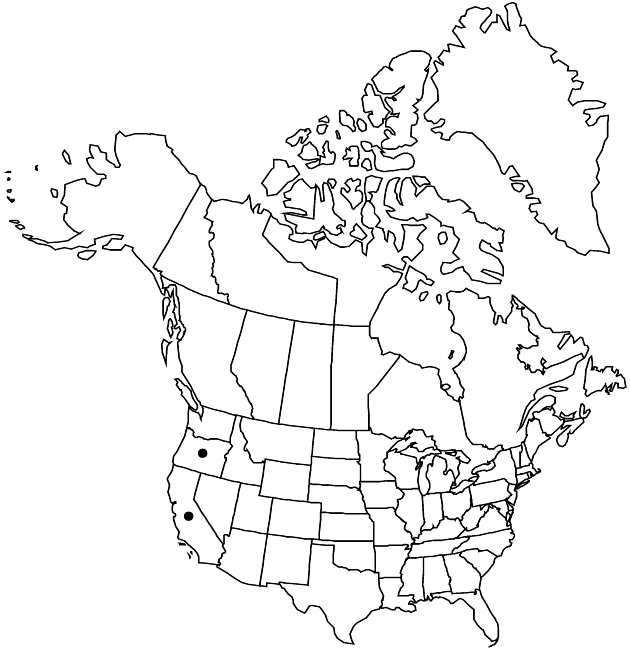Difference between revisions of "Rudbeckia glaucescens"
Leafl. W. Bot. 2: 55. 1937.
FNA>Volume Importer |
imported>Volume Importer |
||
| (6 intermediate revisions by 2 users not shown) | |||
| Line 8: | Line 8: | ||
}} | }} | ||
|common_names=Waxy coneflower | |common_names=Waxy coneflower | ||
| + | |special_status={{Treatment/ID/Special_status | ||
| + | |code=E | ||
| + | |label=Endemic | ||
| + | }} | ||
|basionyms= | |basionyms= | ||
|synonyms={{Treatment/ID/Synonym | |synonyms={{Treatment/ID/Synonym | ||
|name=Rudbeckia californica var. glauca | |name=Rudbeckia californica var. glauca | ||
|authority=S. F. Blake | |authority=S. F. Blake | ||
| + | |rank=variety | ||
}} | }} | ||
|hierarchy=Asteraceae;Asteraceae tribe Heliantheae;Asteraceae (tribe Heliantheae) subtribe Rudbeckiinae;Rudbeckia;Rudbeckia sect. Macrocline;Rudbeckia glaucescens | |hierarchy=Asteraceae;Asteraceae tribe Heliantheae;Asteraceae (tribe Heliantheae) subtribe Rudbeckiinae;Rudbeckia;Rudbeckia sect. Macrocline;Rudbeckia glaucescens | ||
| Line 27: | Line 32: | ||
|elevation=60–1300 m | |elevation=60–1300 m | ||
|distribution=Calif.;Oreg. | |distribution=Calif.;Oreg. | ||
| − | |discussion=<p>Rudbeckia glaucescens often grows on serpentine and often with Darlingtonia.</p> | + | |discussion=<p><i>Rudbeckia glaucescens</i> often grows on serpentine and often with <i>Darlingtonia</i>.</p> |
|tables= | |tables= | ||
|references= | |references= | ||
| Line 36: | Line 41: | ||
-->{{#Taxon: | -->{{#Taxon: | ||
name=Rudbeckia glaucescens | name=Rudbeckia glaucescens | ||
| − | |||
|authority=Eastwood | |authority=Eastwood | ||
|rank=species | |rank=species | ||
| Line 50: | Line 54: | ||
|publication title=Leafl. W. Bot. | |publication title=Leafl. W. Bot. | ||
|publication year=1937 | |publication year=1937 | ||
| − | |special status= | + | |special status=Endemic |
| − | |source xml=https:// | + | |source xml=https://bitbucket.org/aafc-mbb/fna-data-curation/src/2e0870ddd59836b60bcf96646a41e87ea5a5943a/coarse_grained_fna_xml/V19-20-21/V21_93.xml |
|tribe=Asteraceae tribe Heliantheae | |tribe=Asteraceae tribe Heliantheae | ||
|subtribe=Asteraceae (tribe Heliantheae) subtribe Rudbeckiinae | |subtribe=Asteraceae (tribe Heliantheae) subtribe Rudbeckiinae | ||
Latest revision as of 20:15, 5 November 2020
Perennials, to 150 cm (roots fibrous). Leaves bluish green (heavily glaucous), blades lanceolate to elliptic (not lobed), leathery, bases attenuate, margins entire or remotely serrulate, apices acute, faces glabrous; basal petiolate, 20–50 × 4–10 cm; cauline petiolate or sessile, 10–25 × 2–8 cm. Heads borne singly or (2–10) in ± corymbiform arrays. Phyllaries to 1.5 cm. Receptacles conic to columnar; paleae 4–6.5 mm, apices acute, often attenuate, abaxial tips hairy. Ray florets 7–15; laminae elliptic to oblong, 25–40 × 8–14 mm, abaxially hairy. Discs 15–35 × 14–22 mm. Disc florets 250–400+; corollas yellowish green, 3–4 mm; style branches ca. 1 mm, apices acute. Cypselae 4–5.5 mm; pappi coroniform or of ± connate scales, to 1.2 mm. 2n = 36.
Phenology: Flowering summer–fall.
Habitat: Meadows, seeps, streamsides
Elevation: 60–1300 m
Discussion
Rudbeckia glaucescens often grows on serpentine and often with Darlingtonia.
Selected References
None.
